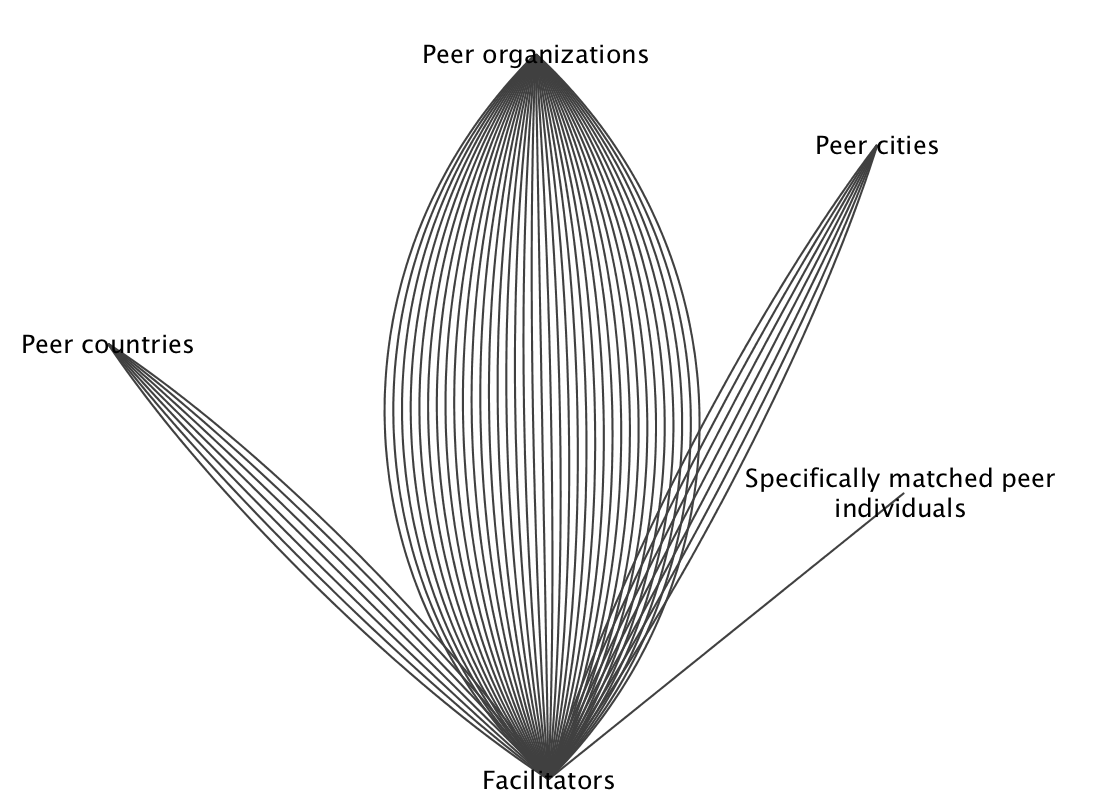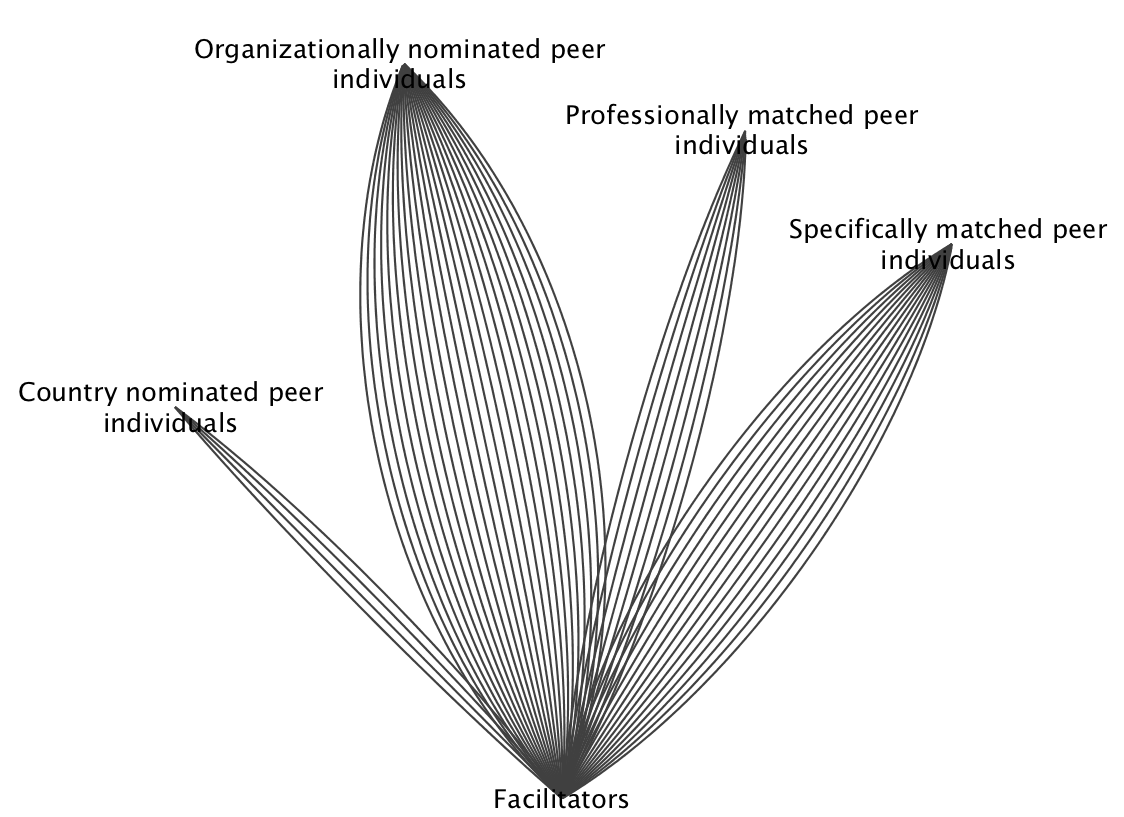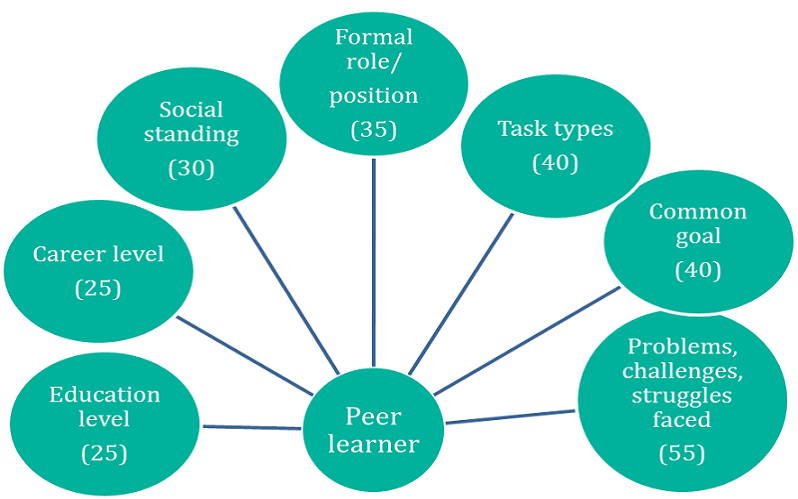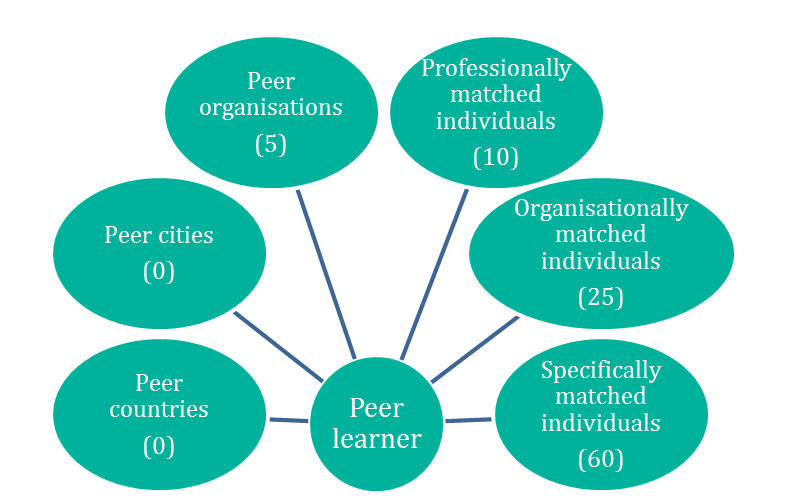Ideas for reflection
If one wants to foster learning among peers, it is vital to bring the right group together and facilitate an effective communication and sharing environment. Here are some ideas to do this.
- There are many different approaches and tools to use to bring peers together. You need to choose a tool that fits what you are trying to do and fosters the best environment for the peers you are bringing together (where they can build trust and share).
- When selecting an engagement method, think about your own limitations, the traveling and time constraints of peers, their different backgrounds, and the goals of your initiative. All of these variables will need to be considered when deciding how to initiate contact.
- Make sure you plan and engage with peers before any foundational meeting; so peers feel comfortable, have had a say on the structure of engagement, and know what to expect.
- Peers need to be matched, specifically, for effective peer learning to occur. The most effective learning seems to occur when peers are matched according to the common problems or challenges they face. Professional matching also opens opportunities for learning.
- Peers who learn from each other are individuals, not organisations (see the figures below which shows that even when facilitators target organisations the actual learners are individuals). This means that you cannot match an organisation with another organisation. You must match people in the organisations, who have ideas to share and brains to receive.
| Who should you be targeting? | |
| Peers targeted by facilitators | Peers engaged by facilitators |
 |
 |
It is not easy to match individuals, especially when their organisations choose who engages in peer learning events. You need to create space for individual selection within organisations, and even devise some matching criteria (based on professional background, years of service). It is often effective to involve peers in the matching process, asking them to complete surveys before the peers are assembled (where they note the challenges they are facing, for instance). This pre-foundational engagement often helps build motivation and interest in peers. One can match peers based on a variety of factors, but some stand out as more effective than others (see the figures below, which shows that peers learn most effectively when matched according to shared challenges and problems; learning also happens when matched according to position and task or policy initiative).
| Potential criteria for matching peers | |
| Who the learners see as peers | Factors to ‘match’ learners |
 |
 |
- Peers find each other in foundational engagements when those attending engage fully, which is motivated by ensuring that peers are motivated to attend. Make communication easy between peers, ensure the engagement space and agenda allow easy interaction, make peers confident to engage, and foster commitment among peers by using contracts.
- Trust is the cornerstone of all peer learning. If you plan on taking peer learning beyond an initial engagement you must incorporate some trust building exercises in this engagement.
| ‘Who’ the peers are |
|
| Getting peers to engage fully in the process |
|
| Logistics of peer interaction |
|
Related Publications
